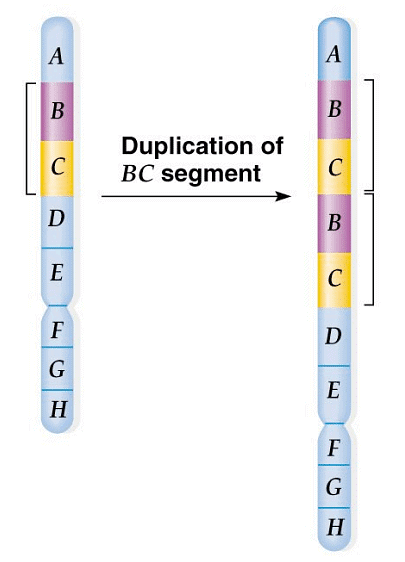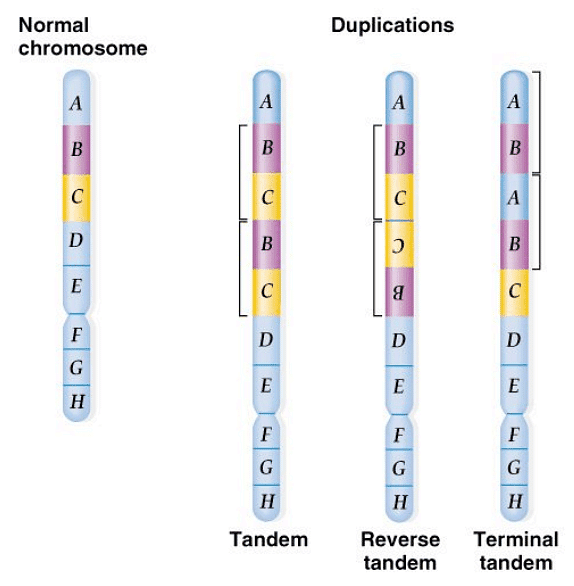Structural Variations in Chromosomes | Botany Optional for UPSC PDF Download
Introduction
Genetic variation encompasses distinctions observed among individuals within the same species or between individuals of different species. These variations can be attributed to differences in alleles resulting from mutations occurring in specific genes. Additionally, there are significant alterations in chromosome structure known as chromosomal aberrations, which typically impact multiple genes. These structural changes in chromosomes are also referred to as chromosomal mutations.
Alterations in Chromosome Structure
There are two primary mechanisms by which the structure of chromosomes can undergo changes:
- Variation in Genetic Material: The total amount of genetic information within a chromosome can be altered. This can either lead to a decrease in genetic content, known as deficiencies or deletions, or an increase in genetic content through duplications and insertions.
- Rearrangement of Genetic Material: While the genetic material remains unchanged in terms of quantity, it can be rearranged within the chromosome structure. This rearrangement can take the form of inversions or translocations.
- Deletion: Involves the loss of a segment from a chromosome.
- Duplication: Involves the repetition of a segment within a chromosome.
- Inversion: Represents a change in the orientation of genetic material along a single chromosome.
- Translocation: Occurs when a segment of one chromosome becomes attached to a nonhomologous chromosome. There are two types of translocations: simple translocations, which involve a one-way transfer, and reciprocal translocations, which involve a two-way exchange of genetic material.
Variations in Chromosome Structure: Deletions
- Deletions involve the absence of a portion of a chromosome, essentially a loss of genetic material. These deletions typically originate from chromosomal breaks induced by various factors such as heat, radiation (especially ionizing radiation), viruses, chemicals, transposable elements, or errors in recombination. It's important to note that deletions are permanent and irreversible because the deleted DNA is permanently lost or degraded.

- The impact of a deletion largely depends on the specific genetic material that has been deleted. For instance, a deletion occurring in one allele of a homozygous wild-type organism might result in a normal phenotype, whereas the same deletion in the wild-type allele of a heterozygote can lead to a mutant phenotype.
- Deletions that affect the centromere can lead to the formation of acentric chromosomes, which are typically lost during cell division, often with severe or lethal consequences. Notably, there are no known living humans with an entire autosome (non-sex chromosome) deleted from their genome.
- In humans, disorders caused by large chromosomal deletions are primarily observed in heterozygotes, as homozygotes usually do not survive due to the loss of critical genetic material. The number of gene copies plays a significant role in determining the severity of the disorder, and syndromes can result from the loss of several to many genes.
- Examples of human disorders caused by large chromosomal deletions include Cri-du-chat syndrome (OMIM 123450), which results from the deletion of a segment of the short arm of chromosome 5. This deletion leads to severe mental retardation and physical abnormalities and is associated with a distinctive high-pitched cry, resembling a cat's cry, which gives the syndrome its name.
Variations in Chromosome Structure: Duplications
- Duplications involve the replication of chromosomal segments, and they can vary in size and location within the chromosome structure. These duplications can take several forms:

- Tandem Duplications: In this arrangement, duplicated segments are located adjacent to each other within the chromosome.
- Reverse Tandem Duplications: These result in the genes being arranged in the opposite order of the original sequence.
- Terminal Tandem Duplications: In this case, the tandem duplication occurs at the end of a chromosome.

- One example of a tandem duplication can be found in the Drosophila species, where a specific allele known as "Bar" affects the shape of the eyes. The Bar allele reduces the number of facets in the eye, causing it to appear slit-like rather than oval in shape. This allele behaves like an incompletely dominant mutation:
- Females that are heterozygous for the Bar allele exhibit a kidney-shaped eye that is larger and more faceted than the eye of a female homozygous for Bar.
- Males, who have only one X chromosome, are hemizygous for Bar and display slit-like eyes similar to those seen in Bar/Bar females.
- Cytological examination of chromosomes revealed that the Bar allele results from the duplication of a small chromosome segment (16A) of the X chromosome.
Variations in Chromosome Structure: Inversions
- Inversions occur when a segment of a chromosome detaches and then reintegrates itself in an orientation that is 180 degrees different from its original position. There are two primary types of inversions:

- Pericentric Inversions: These inversions include the centromere within the inverted region, resulting in a chromosome with an inverted segment that spans both arms of the chromosome.
- Paracentric Inversions: These inversions do not involve the centromere and affect only one arm of the chromosome.
- Linked genes that are physically close to each other on the chromosome tend to be inverted together when an inversion occurs.
- The meiotic consequences of inversions depend on whether the inversion occurs in a homozygote (both chromosomes have the inversion) or a heterozygote (only one chromosome has the inversion).
- In a homozygote with both chromosomes displaying the same inversion, meiosis proceeds normally without issues.
- In a heterozygote with one chromosome bearing the inversion and the other not, the outcome depends on whether crossing-over occurs during meiosis.
- If there is no crossing-over, meiosis proceeds without problems.
- However, if crossing-over occurs within the inverted region, it can lead to unequal crossovers that result in significant genetic consequences.
- In the case of an inversion, the total amount of genetic information remains unchanged. Consequently, the vast majority of inversions do not lead to any observable phenotypic consequences.
- In rare instances, inversions can impact an individual's phenotype. This can occur due to two main factors:
- Break Point Effect: The breakpoints that lead to the inversion happening within a critical gene, resulting in functional changes.
- Position Effect: A gene is relocated in a manner that alters its gene expression or regulatory context.
- Approximately 2% of the human population carries inversions that can be detected using a light microscope. Most of these individuals exhibit normal phenotypes. However, a small percentage of individuals can produce offspring with genetic abnormalities as a result of these inversions.
Inversion heterozygotes reduce the number of recombinant progeny
Heterozygotes with inversions lead to a decrease in the number of offspring that exhibit genetic recombination. This reduction occurs because in heterozygotes, an inversion loop forms, aligning the homologous regions as tightly as possible.
Recombination Involving Inversions
When dealing with heterozygous pericentric inversions, the following types of recombination outcomes can occur:
- One gamete remains normal.
- One gamete carries the inversion.
- One gamete experiences a duplication and a deletion.
- One gamete undergoes reciprocal duplication and deletion.
In the case of heterozygous paracentric inversions, the possible recombination outcomes include:
- One gamete remains normal.
- One gamete carries the inversion.
- Two deletion products are formed.
- Some genetic material is lost during recombination.
Translocations
- Chromosomal translocations arise when a portion of one chromosome becomes affixed or attached to another chromosome.
- Two primary types of medically significant translocations exist:
- Reciprocal (Balanced) Translocations: This type of translocation involves an exchange of chromosome segments between two different chromosomes. Despite the rearrangement, the total amount of genetic material remains the same. While not causing loss or gain of genetic material, these translocations can still lead to diseases in humans.
- Robertsonian (Unbalanced) Translocations: In this case, a type of translocation occurs that results in an unequal distribution of genetic material. This can lead to structural abnormalities and is also capable of causing disease in humans.

Reciprocal Translocations
Reciprocal translocations occur when two non-homologous chromosomes engage in the exchange of genetic material. These translocations can originate from two distinct mechanisms:
- Chromosomal Breakage and DNA Repair: The translocation can result from the breakage of chromosomes followed by the repair of the DNA.
- Abnormal Crossovers: Translocations can also occur due to aberrant crossover events during meiosis.
Reciprocal translocations lead to a reorganization of genetic material within the chromosomes. Importantly, they do not alter the overall quantity of genetic material. For this reason, they are often referred to as balanced translocations.
Robertsonian Translocations
- In Robertsonian translocations, the transfer of genetic material takes place in a unidirectional manner, meaning that genetic material from one chromosome is transferred to another, but not in both directions.
- Robertsonian translocations are often associated with phenotypic abnormalities or even lethality.
- An example of a condition related to Robertsonian translocations is Familial Down Syndrome. In this scenario, a significant portion of chromosome 21 becomes attached to chromosome 14. As a result, individuals with this condition have three copies of genes located on the affected segment of chromosome 21, leading to the characteristic features of Down syndrome.
- The mechanism of Robertsonian translocations involves specific steps:
- Breaks occur at the extreme ends of the short arms of two non-homologous acrocentric chromosomes.
- The larger fragments resulting from the breaks fuse together at their centromeric regions, forming a single chromosome.
- The smaller acrocentric fragments are subsequently lost or eliminated during this process.
- Robertsonian translocations are most commonly observed in chromosomes 13, 14, 15, and 21, which are all acrocentric chromosomes.
Meiosis in Robertsonian Translocation
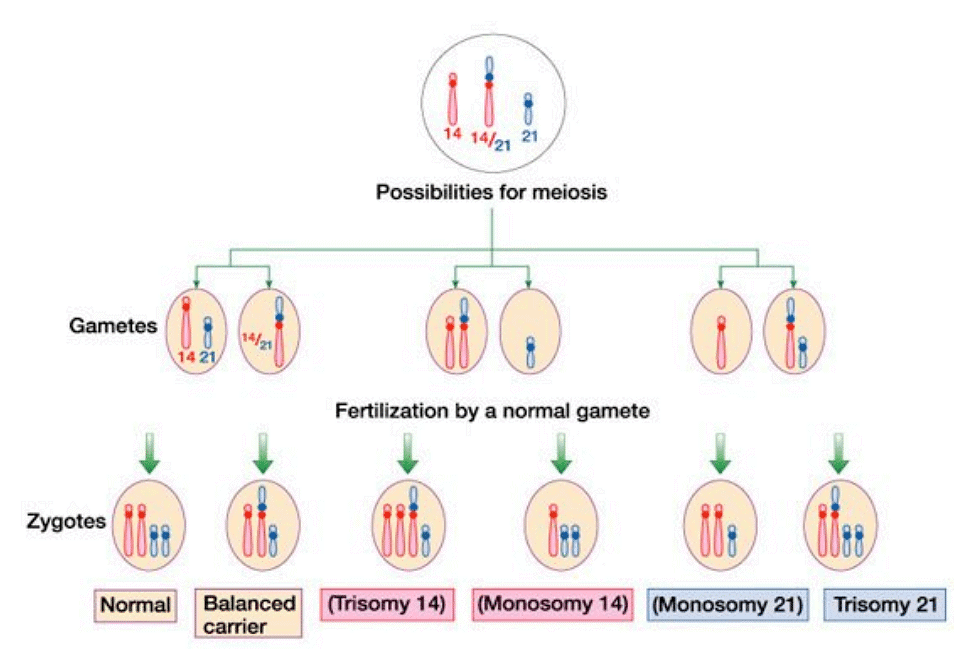
Chromosomal Mutations and Human Tumors
- The majority of malignant tumors in humans exhibit chromosomal mutations.
- Among these mutations, translocations are the most frequently observed.
- Chromosomal abnormalities in tumors can vary significantly, ranging from straightforward rearrangements to complex alterations in chromosome structure and number.
- Many types of tumors display a wide array of mutations, while some are linked to specific chromosomal abnormalities.
Folicular Lymphoma

Burkitt Lymphoma
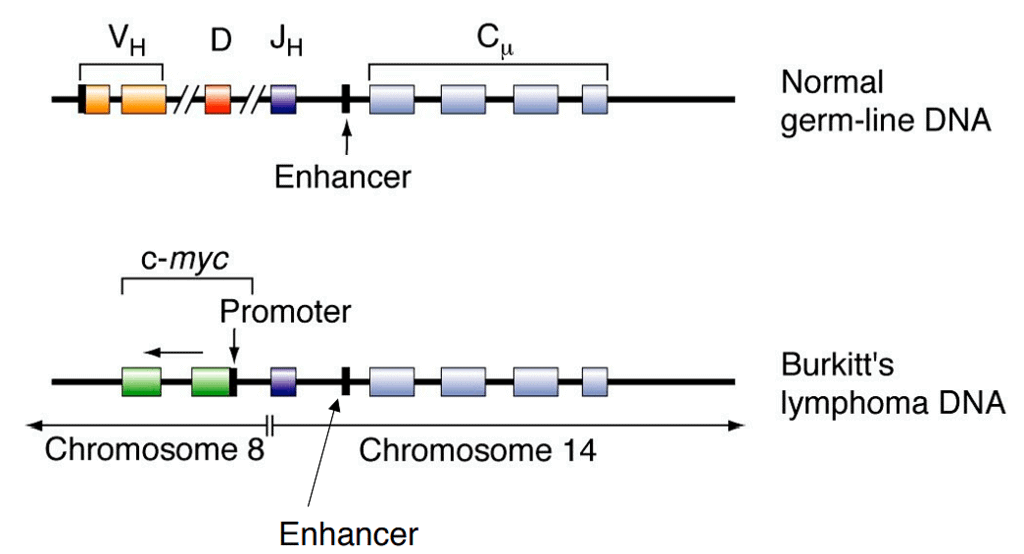
Chronic Myelogenous Leukemia
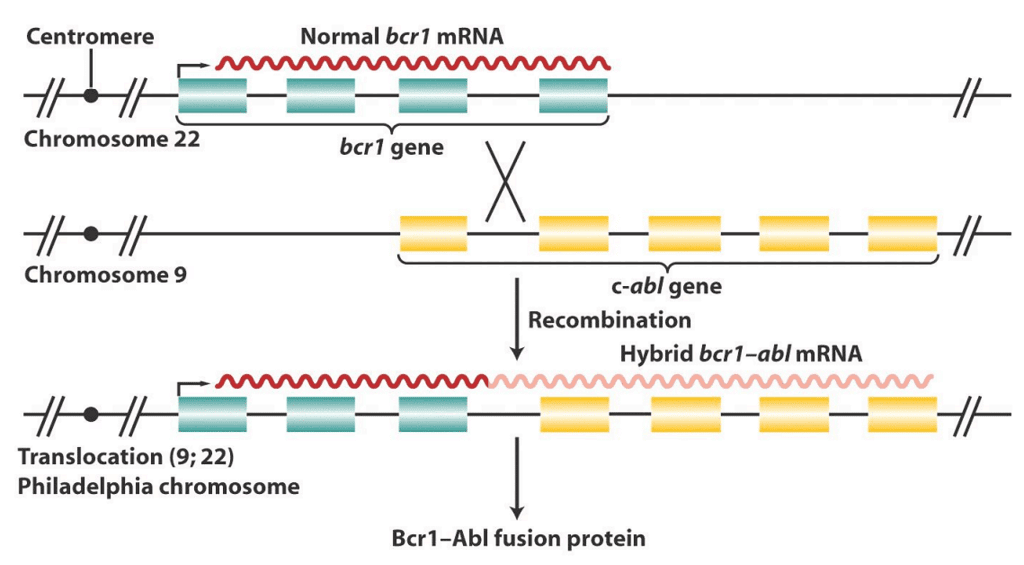
|
160 videos|140 docs
|

|
Explore Courses for UPSC exam
|

|

